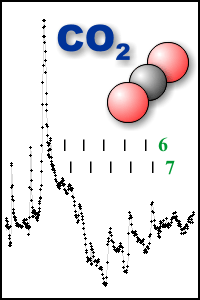Vibrational branching ratios and asymmetry parameters in the
photoionization of CO2
in the region between 650 Å and 840 Å
A.C. Parr,1 J.B. West,2
M.R.F. King,2 K. Ueda,3
P.M. Dehmer,4 J.L. Dehmer,5
D.J. Schwab,6 A.M. Sansonetti,6
K. Olsen,6 and R.A. Dragoset 6
1Optical Technology Division, NIST, Gaithersburg, MD 20899, USA
2Daresbury Laboratory, Warrington, WA4 4AD, UK
3Research Institute for Scientific Measurements, Tohoku University,
Sendai 980, Japan
4Office of Basic Energy Science, U.S. Department of Energy,
Germantown, MD 20874, USA
5National Science Foundation, 4201 Wilson Blvd., Arlington, VA
22230, USA
6Office of Electronic Commerce in Scientific and Engineering Data,
Physics Laboratory, NIST |
 |




 NIST Standard Reference Database 119
NIST Standard Reference Database 119